Dmitry Vatolin
AIM 2024 Challenge on Compressed Video Quality Assessment: Methods and Results
Aug 21, 2024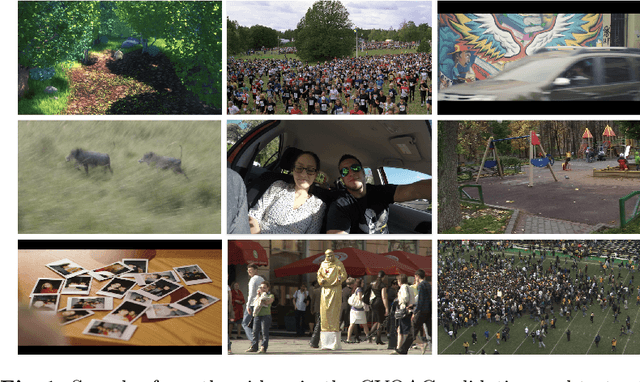

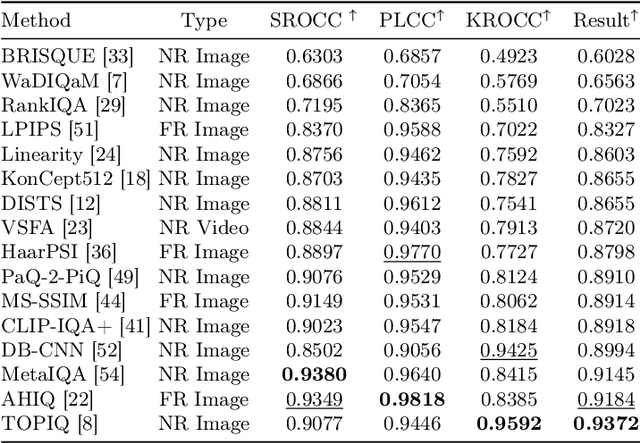
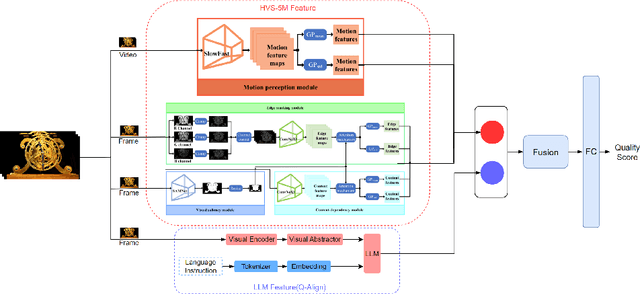
Abstract:Video quality assessment (VQA) is a crucial task in the development of video compression standards, as it directly impacts the viewer experience. This paper presents the results of the Compressed Video Quality Assessment challenge, held in conjunction with the Advances in Image Manipulation (AIM) workshop at ECCV 2024. The challenge aimed to evaluate the performance of VQA methods on a diverse dataset of 459 videos, encoded with 14 codecs of various compression standards (AVC/H.264, HEVC/H.265, AV1, and VVC/H.266) and containing a comprehensive collection of compression artifacts. To measure the methods performance, we employed traditional correlation coefficients between their predictions and subjective scores, which were collected via large-scale crowdsourced pairwise human comparisons. For training purposes, participants were provided with the Compressed Video Quality Assessment Dataset (CVQAD), a previously developed dataset of 1022 videos. Up to 30 participating teams registered for the challenge, while we report the results of 6 teams, which submitted valid final solutions and code for reproducing the results. Moreover, we calculated and present the performance of state-of-the-art VQA methods on the developed dataset, providing a comprehensive benchmark for future research. The dataset, results, and online leaderboard are publicly available at https://challenges.videoprocessing.ai/challenges/compressed-video-quality-assessment.html.
ERQA: Edge-Restoration Quality Assessment for Video Super-Resolution
Oct 19, 2021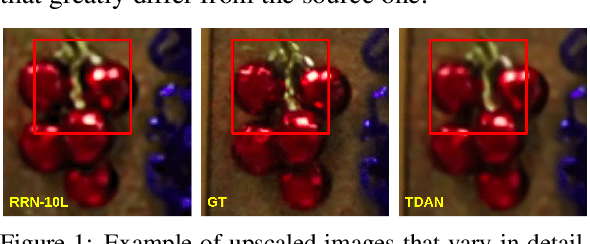



Abstract:Despite the growing popularity of video super-resolution (VSR), there is still no good way to assess the quality of the restored details in upscaled frames. Some SR methods may produce the wrong digit or an entirely different face. Whether a method's results are trustworthy depends on how well it restores truthful details. Image super-resolution can use natural distributions to produce a high-resolution image that is only somewhat similar to the real one. VSR enables exploration of additional information in neighboring frames to restore details from the original scene. The ERQA metric, which we propose in this paper, aims to estimate a model's ability to restore real details using VSR. On the assumption that edges are significant for detail and character recognition, we chose edge fidelity as the foundation for this metric. Experimental validation of our work is based on the MSU Video Super-Resolution Benchmark, which includes the most difficult patterns for detail restoration and verifies the fidelity of details from the original frame. Code for the proposed metric is publicly available at https://github.com/msu-video-group/ERQA.
Temporally Coherent Person Matting Trained on Fake-Motion Dataset
Sep 10, 2021
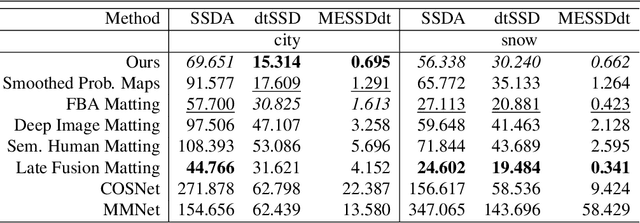
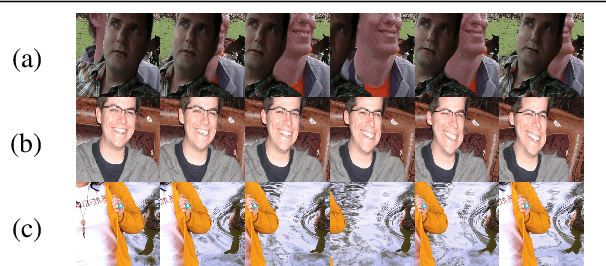
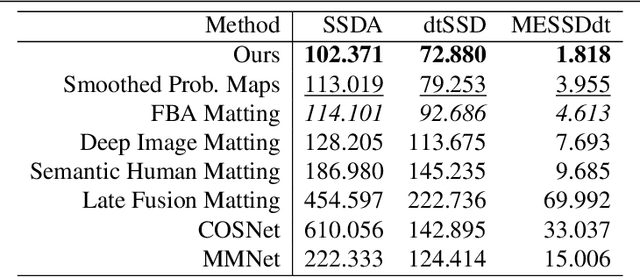
Abstract:We propose a novel neural-network-based method to perform matting of videos depicting people that does not require additional user input such as trimaps. Our architecture achieves temporal stability of the resulting alpha mattes by using motion-estimation-based smoothing of image-segmentation algorithm outputs, combined with convolutional-LSTM modules on U-Net skip connections. We also propose a fake-motion algorithm that generates training clips for the video-matting network given photos with ground-truth alpha mattes and background videos. We apply random motion to photos and their mattes to simulate movement one would find in real videos and composite the result with the background clips. It lets us train a deep neural network operating on videos in an absence of a large annotated video dataset and provides ground-truth training-clip foreground optical flow for use in loss functions.
Perceptually Motivated Method for Image Inpainting Comparison
Jul 14, 2019
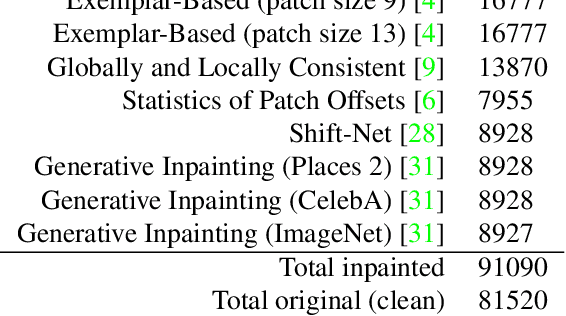
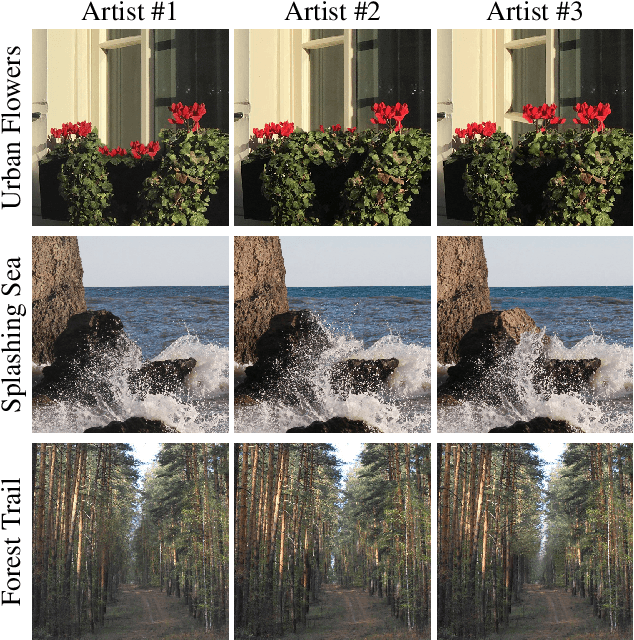
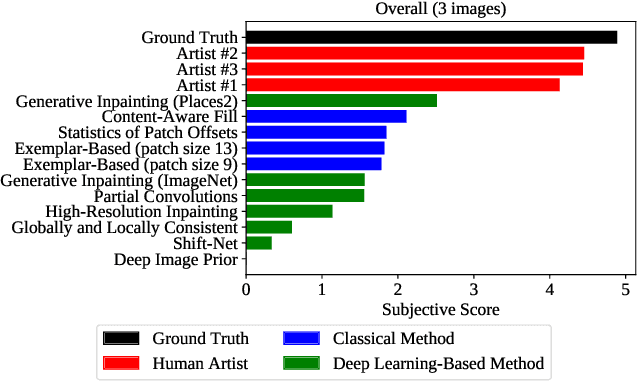
Abstract:The field of automatic image inpainting has progressed rapidly in recent years, but no one has yet proposed a standard method of evaluating algorithms. This absence is due to the problem's challenging nature: image-inpainting algorithms strive for realism in the resulting images, but realism is a subjective concept intrinsic to human perception. Existing objective image-quality metrics provide a poor approximation of what humans consider more or less realistic. To improve the situation and to better organize both prior and future research in this field, we conducted a subjective comparison of nine state-of-the-art inpainting algorithms and propose objective quality metrics that exhibit high correlation with the results of our comparison.
 Add to Chrome
Add to Chrome Add to Firefox
Add to Firefox Add to Edge
Add to Edge